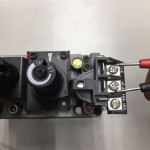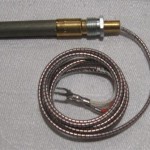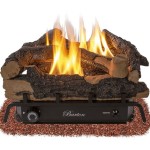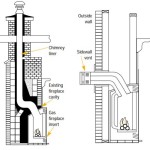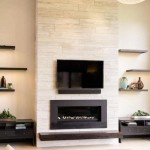Recessed Lighting Fireplace Ideas: A Guide to Illumination and Ambiance
Fireplaces have long been a focal point in homes, providing warmth, comfort, and a natural gathering place. However, their aesthetic appeal can be significantly enhanced through strategic lighting. Recessed lighting, in particular, offers a versatile and discreet method for illuminating a fireplace, allowing homeowners to create a variety of moods and highlight architectural features. This article explores various recessed lighting fireplace ideas, focusing on their practical application and design considerations.
Understanding the Basics of Recessed Lighting
Recessed lighting, also known as can lights or pot lights, consists of light fixtures installed directly into a ceiling, creating a flush and streamlined appearance. This type of lighting offers several advantages, including its ability to provide focused or general illumination, minimize glare, and blend seamlessly with the surrounding architecture. The key components of a recessed lighting system include the housing, the trim, and the bulb or LED module. Different types of housings are available, each designed for specific ceiling types and insulation requirements. The trim is the visible portion of the fixture and plays a crucial role in directing light and influencing the overall aesthetic. LED modules are preferred over traditional incandescent bulbs due to their energy efficiency, long lifespan, and cool operation, reducing the risk of heat-related damage to the surrounding structure.
When considering recessed lighting for a fireplace, it is important to select fixtures that are specifically designed for insulation contact (IC-rated) if they will be in direct contact with insulation. This ensures that the fixtures do not overheat and pose a fire hazard. Furthermore, dimmable LED modules allow for greater control over the light intensity, enabling homeowners to adjust the ambiance to suit different occasions. The color temperature of the light is also an important consideration. Warmer color temperatures (2700K-3000K) create a cozy and inviting atmosphere, while cooler color temperatures (3500K-4000K) provide a brighter and more modern look.
Key Considerations for Fireplace Recessed Lighting Placement
The placement of recessed lighting around a fireplace is critical to achieving the desired effect. Improper placement can result in harsh shadows, uneven illumination, or a lack of visual interest. Several factors should be considered when determining the optimal placement of recessed lights, including the size and style of the fireplace, the height of the ceiling, and the overall design of the room.
For fireplaces with a mantel, recessed lights can be positioned above the mantel to highlight decorative objects or artwork. This creates a focal point and draws attention to the mantel's architectural details. The lights should be spaced evenly and positioned at a distance that prevents glare and ensures uniform illumination. In general, a spacing of 2-3 feet between fixtures is recommended. The distance from the wall should be adjusted based on the height of the ceiling and the desired beam angle of the light. Taller ceilings may require fixtures with wider beam angles to effectively illuminate the mantel.
For fireplaces without a mantel, recessed lights can be used to create a wash of light across the fireplace surround. This approach is particularly effective for highlighting textured materials such as stone or brick. The lights should be placed closer to the wall to accentuate the texture and create depth. Alternatively, recessed lights can be positioned on either side of the fireplace to create a symmetrical and balanced look. This technique is suitable for modern and minimalist fireplace designs. When using this approach, it is important to ensure that the lights are aligned properly and that they provide consistent illumination.
Another consideration is the placement of recessed lights relative to the firebox. It is generally advisable to avoid placing recessed lights directly above the firebox, as the heat from the fire can damage the fixtures and shorten their lifespan. Instead, the lights should be positioned to the sides or slightly forward of the firebox to minimize exposure to heat. If direct placement is unavoidable, heat-resistant fixtures and proper insulation should be used to protect the lights.
Specific Recessed Lighting Techniques for Different Fireplace Styles
The choice of recessed lighting techniques should be tailored to the specific style of the fireplace. Different styles of fireplaces, such as traditional, modern, or rustic, require different approaches to lighting design. By carefully considering the architectural features and aesthetic qualities of the fireplace, homeowners can select recessed lighting techniques that enhance its overall appeal.
For traditional fireplaces, recessed lighting can be used to create a warm and inviting ambiance. Warm-toned LED modules and decorative trims can complement the classic design elements of the fireplace. Recessed lights can be positioned above the mantel to highlight ornate carvings or antique accessories. Dimmable fixtures allow for the creation of a cozy and intimate atmosphere. Accent lighting can also be used to highlight specific features, such as a decorative fire screen or a vintage hearth.
Modern fireplaces often feature clean lines and minimalist designs. Recessed lighting can be used to enhance these characteristics by providing a sleek and understated illumination. Cool-toned LED modules and trimless fixtures can create a contemporary look. Recessed lights can be positioned to wash the fireplace surround with light, highlighting the texture and color of the materials. Linear recessed lights, which consist of long, narrow fixtures, can be used to create a dramatic effect and emphasize the horizontal lines of the fireplace.
Rustic fireplaces, characterized by their natural materials and rugged textures, benefit from recessed lighting that accentuates their inherent beauty. Warm-toned LED modules and bronze or copper trims can complement the earthy tones of the fireplace. Recessed lights can be positioned to highlight the texture of stone or brick, creating a sense of depth and dimension. Uplighting, where recessed lights are aimed upwards to illuminate the fireplace surround, can create a dramatic effect and emphasize the height of the fireplace. Adjustable recessed lights allow for the precise control of the light beam, enabling homeowners to highlight specific features or create a variety of lighting effects.
Examples of Recessed Lighting Fireplace Ideas
Several specific recessed lighting ideas can be implemented to enhance the aesthetic appeal of a fireplace. These ideas range from simple and straightforward to more complex and creative, depending on the homeowner's preferences and the architectural features of the fireplace.
Mantel Lighting: Installing recessed lights above the mantel to illuminate decorative objects, artwork, or family photos is a common and effective technique. This approach creates a focal point and draws attention to the mantel's architectural details. The spacing and angle of the lights should be carefully considered to ensure uniform illumination and prevent glare.
Wall Washing: Positioning recessed lights close to the wall to create a wash of light across the fireplace surround is an excellent way to highlight textured materials such as stone or brick. This technique emphasizes the texture and creates depth, adding visual interest to the fireplace. The distance from the wall and the beam angle of the lights should be adjusted to achieve the desired effect.
Symmetrical Lighting: Placing recessed lights on either side of the fireplace to create a symmetrical and balanced look is a suitable approach for modern and minimalist fireplace designs. This technique provides consistent illumination and enhances the overall aesthetic harmony of the room. The lights should be aligned properly and positioned at the same distance from the fireplace.
Uplighting: Aiming recessed lights upwards to illuminate the fireplace surround is a dramatic technique that emphasizes the height of the fireplace. This approach is particularly effective for rustic fireplaces with tall chimneys or fireplaces that extend to the ceiling. The lights should be positioned to create a soft and even wash of light, avoiding harsh shadows or glare.
Linear Lighting: Using linear recessed lights, which consist of long, narrow fixtures, can create a modern and sophisticated look. These lights can be positioned horizontally or vertically to emphasize the lines of the fireplace and add a contemporary touch to the room. Linear lights are particularly well-suited for minimalist fireplace designs.
Safety Considerations and Professional Installation
Recessed lighting, while aesthetically pleasing, involves electrical components and requires adherence to safety standards. Improper installation can lead to electrical hazards, including fire and shock. Therefore, it is crucial to prioritize safety and consider professional installation when implementing recessed lighting for a fireplace.
Before beginning any electrical work, it is essential to turn off the power to the circuit at the breaker box. This prevents the risk of electric shock during installation. It is also important to consult local building codes and obtain any necessary permits before proceeding with the project. Building codes often specify requirements for electrical wiring, insulation, and fixture placement.
When selecting recessed lighting fixtures, ensure that they are UL-listed or ETL-listed, which indicates that they have been tested and certified by a reputable testing laboratory. This provides assurance that the fixtures meet safety standards and are suitable for use in residential applications. As mentioned previously, IC-rated fixtures should be used in areas where the lights will be in contact with insulation.
Wiring recessed lights requires knowledge of electrical circuits and wiring techniques. If you are not comfortable working with electricity, it is best to hire a qualified electrician to perform the installation. A professional electrician can ensure that the wiring is done correctly and safely, minimizing the risk of electrical hazards. Furthermore, a professional electrician can advise on the optimal placement of the lights and help you choose the right fixtures for your specific needs.
Recessed lighting provides versatile and effective way to illuminate a fireplace and enhance its aesthetic appeal. By carefully considering the placement, style, and safety aspects of recessed lighting, homeowners can create a warm, inviting, and visually stunning focal point in their homes. The strategies outlined above provide a comprehensive guide to recessed lighting fireplace ideas, empowering individuals to make informed decisions and achieve the desired ambiance in their living spaces.

Accent Recessed Lighting Highlighting A Painting Hung Over Fireplace Living Room

How To Plan And Design Recessed Lighting For A Room

How To Elevate Your Living Room Decor With A Mid Century Lamp Www Livingroomi Recessed Lighting Paint Colors For Family

Lights Above Fireplace Contemporary Living Room Design Rugs In Area

20 Of The Best Living Room Recessed Lighting Ideas Lightopia

8 Ways To Light Your Fireplace For Maximum Effect

8 Ways To Light Your Fireplace For Maximum Effect

Add Finiré Led Recessed Lighting From The Lutron Ivalo Collection To Create Perfect Ambiance Wh Fireplace Design Diy Living Room Decor Trendy Rooms

The 23 Best Recessed Lighting Ideas Lightopia

ᑕ❶ᑐ How To Install A Recessed Electric Fireplace Magikflame
Related Posts

